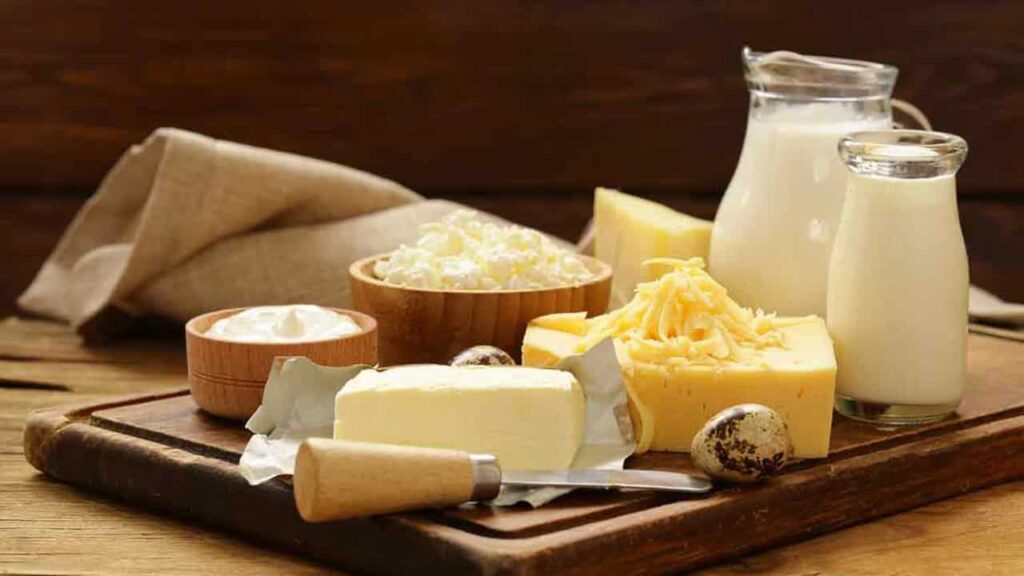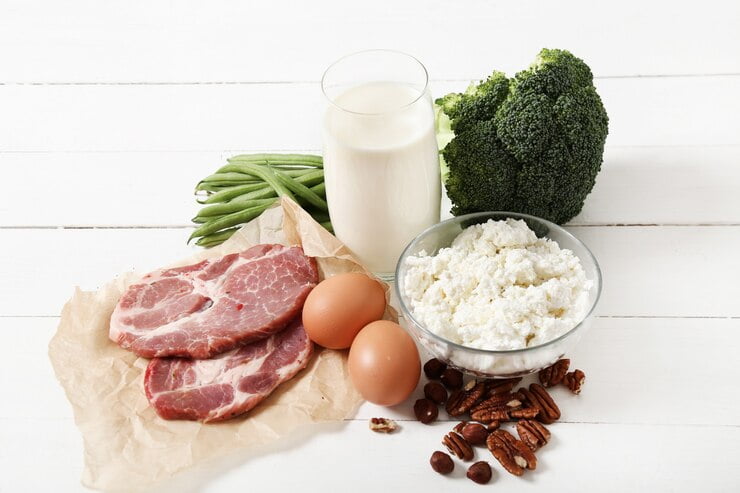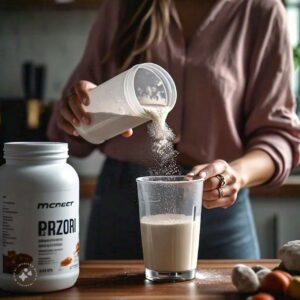Protein is one of the most important nutrients in the quest for a healthier lifestyle. Making sure you are getting enough nutrition is important whether you are an athlete attempting to gain muscle, a person trying to lose weight, or someone just wanting to be healthy overall. But how can one successfully traverse the world of protein-rich foods when there are so many options available? Do not be alarmed! Everything you need to know to protein intake emphasize it in your diet, from the fundamentals to sophisticated tactics, will be covered in this extensive guide.
Understanding the Importance of protein
Let us first examine why it is so important to our bodies before getting into the specifics of eating foods high in it:
- Muscle Building and Repair: It provides the building blocks necessary for muscle growth and repair, making it essential for anyone engaged in physical activity or strength training.
- Weight Management: High-rich diets have been shown to increase feelings of fullness and boost metabolism, making them effective for weight management and fat loss.
- Cellular Function: It play a vital role in various cellular functions, including enzyme production, hormone regulation, and immune system support.
Now that we’ve covered the basics, let’s explore ten practical strategies for incorporating more into your diet:
1. Prioritize Protein-Rich Foods
2. Incorporate Protein Shakes or Smoothies
3. Snack on High-Protein Options
4. Opt for Lean Meats and Fish
5. Add Beans and Legumes to Meals
6. Include Dairy Products like Greek Yogurt
7. Choose Protein-Rich Grains like Quinoa
8. Use Protein-Rich Ingredients in Cooking
9. Plan Meals with Protein in Mind
10. Read Food Labels for Protein Content
1. Prioritize Protein-Rich Foods
When it comes to boosting your intake, focus on incorporating foods that are naturally rich with it. These include:
- Lean meats such as chicken breast, turkey, and lean cuts of beef or pork.
- Fish and seafood, particularly varieties like salmon, tuna, and trout.
- Eggs, which are not only an excellent source of it but also packed with essential vitamins and minerals.
- Plant-based sources such as tofu, tempeh, edamame, and seitan.
- Nuts and seeds like almonds, peanuts, chia seeds, and hemp seeds.
- Dairy products such as Greek yogurt, cottage cheese, and low-fat milk.
2. Incorporate Protein Shakes or Smoothies
Particularly for people who lead hectic lives or are constantly on the go, protein shakes or smoothies are a tasty and simple method to enhance your intake. To make a filling and nutritious snack or meal replacement, simply combine your preferred protein powder with fruits, veggies, and liquid (such milk or water).
3. Snack on High-Protein Options
To keep yourself feeling full and content in between meals, choose high-rich snacks rather than ones that are high in carbohydrates or sugar. Some healthy high-rich snack ideas include:
- Greek yogurt topped with berries and a sprinkle of nuts or seeds.
- Hard-boiled eggs paired with a piece of fruit.
- Cottage cheese with sliced vegetables or whole-grain crackers.
- Hummus served with carrot sticks or cucumber slices.
- Its bars made with natural ingredients and minimal added sugars.

Protein Intake
4. Opt for Lean Meats and Fish
When choosing fish and meats, choose lean varieties that are lower in calories and saturated fat. Lean beef or pig chops, skinless chicken breast, and turkey breast are also great options. Omega-3 fatty acids, which are vital for heart and brain function, are also found in fatty fish like salmon, mackerel, and sardines. These fish also supply for it.
5. Add Beans and Legumes to Meals
For anyone trying to increase their protein consumption, beans and legumes are a pantry staple since they are inexpensive, adaptable, and high with it. For an added protein boost, add beans to soups, salads, stir-fries, casseroles, and black beans, chickpeas, and kidney beans.
6. Include Dairy Products like Greek Yogurt
Dairy products like Greek yogurt are not only rich in protein but also contain calcium and probiotics for digestive health. Enjoy Greek yogurt as a snack or incorporate it into smoothies, parfaits, and sauces for added creaminess and nutrition.
7. Choose Rich Grains like Quinoa
Although grains are not generally thought of as high with it, some types are unexpectedly high in this vital component. For instance, quinoa has all nine of the necessary amino acids required by our bodies, making it a complete protein. Quinoa can be used in place of typical grains like rice or pasta in your favorite recipes to boost the it content.
8. Use High-rich Ingredients in Cooking
Get creative in the kitchen by using protein-rich ingredients in your cooking and baking plans. For example:
- Replace traditional flour with almond flour or chickpea flour in recipes for added it and fiber.
- Incorporate powdered peanut butter into smoothies, baked goods, or savory sauces for a boost of intake and flavor.
- Experiment with tofu, tempeh, or seitan as meat substitutes in stir-fries, curries, and sandwiches.
9. Plan Meals with Protein in Mind
It is important to set aside time to prepare your meals and snacks in advance to guarantee you are getting adequate amount throughout the day. Make it a point to have a protein source at every meal, be it lunch, supper, or breakfast. Meal planning enables you to have wholesome meals ready to eat whenever hunger hits, which can also be a good tactic for maintaining your objectives.
10. Read Food Labels for Protein Content
When grocery shopping, take a moment to read food labels and compare the protein content of different products. Look for items that are high with it and low in added sugars, sodium, and unhealthy fats. Pay attention to serving sizes as well, as they can vary from product to product.
The importance of protein in our diets
It is important for maintaining the health of our immune system, controlling blood sugar, building strong hair, skin, and nails, regulating hormones, sustaining fullness throughout the day, and increasing metabolism. However, because of the usual Western diet and our hectic schedules, we frequently fail to meet these objectives, even though they are crucial to our health and wellbeing.
Table Guidelines
Sure, here’s a table listing High-rich foods and their approximate content per serving:
| Food | Protein Content (per serving) |
|---|---|
| Chicken breast | 25 grams |
| Turkey breast | 25 grams |
| Lean beef | 25 grams |
| Fish (salmon, tuna) | 20-25 grams |
| Eggs | 6 grams (per egg) |
| Greek yogurt | 15-20 grams |
| Cottage cheese | 10-15 grams |
| Lentils | 18 grams |
| Chickpeas | 15 grams |
| Quinoa | 8 grams |
| Tofu | 10 grams |
| Edamame | 8 grams |
| Almonds | 6 grams (per ounce) |
| Peanut butter | 8 grams (per 2 tablespoons) |
| Whey powder | 20-25 grams (per scoop) |
Daily protein intake can vary depending on factors like age, gender, weight, and activity level. However, a general recommendation for adults is around 0.8 grams per kilogram of body weight. Here’s a rough guideline for daily intake based on weight:
| Weight (kg) | Daily Protein Intake (grams) |
|---|---|
| 50 | 40 |
| 60 | 48 |
| 70 | 56 |
| 80 | 64 |
| 90 | 72 |
| 100 | 80 |
These are just general guidelines. Individual protein needs may vary, so it is always a good idea to consult with a healthcare professional or a dietitian for personalized recommendations.
FAQS
How to increase protein intake for muscle gain?
To increase protein intake for muscle gain, incorporate protein-rich foods like lean meats, fish, eggs, and dairy into each meal. Additionally, consider supplementing with Protein Powders for Men to ensure you meet your daily protein requirements.
How to increase protein in body naturally?
Increase protein in the body naturally by eating a balanced diet that includes high-protein foods such as lean meats, poultry, fish, eggs, dairy products, beans, lentils, nuts, and seeds.
How to increase protein intake for vegetarians?
Vegetarians can increase protein intake by consuming a variety of plant-based protein sources such as beans, lentils, chickpeas, tofu, tempeh, quinoa, nuts, seeds, and high-protein grains. Including a range of these foods ensures a complete amino acid profile.



